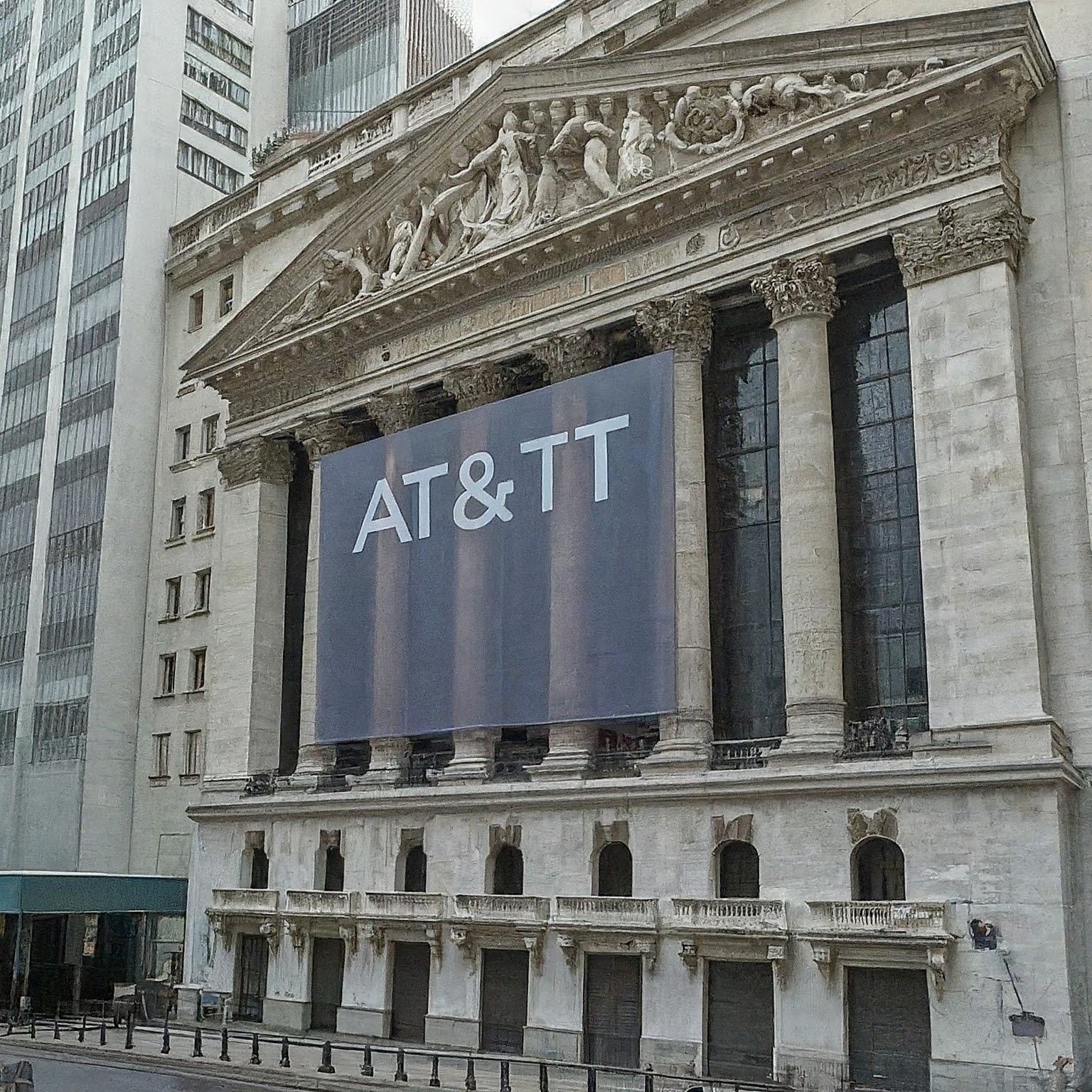AT&T, a household name synonymous with telecommunications for over a century, trades on the New York Stock Exchange (NYSE) under the ticker symbol T. This article delves into AT&T’s presence on the NYSE, exploring its historical performance, recent developments, and future prospects.

A Legacy on the NYSE
AT&T’s listing on the NYSE dates back to 1885, making it one of the exchange’s longest-standing companies. Throughout its history, AT&T has witnessed and navigated significant shifts in the telecommunications landscape. From the invention of the telephone to the rise of mobile networks and the internet, AT&T has consistently adapted and evolved.
Early Dominance and Breakup: In the 20th century, AT&T held a near-monopoly on telephone services in the US. However, concerns about anti-competitive practices led to a landmark antitrust case in 1984. The resulting court order forced AT&T to divest its regional Bell operating companies, creating a more competitive market.
Navigating a Changing Landscape: The breakup ushered in a new era for AT&T. The company focused on long-distance services, cellular networks, and internet access. Acquisitions like McCaw Cellular in 1994 solidified its position in the mobile market.
Mergers and Acquisitions: AT&T continued to reshape its portfolio through strategic mergers. The acquisition of Time Warner in 2018 aimed to create a media and telecommunications powerhouse. However, the deal faced regulatory hurdles and ultimately resulted in the spin-off of WarnerMedia as Warner Bros. Discovery in 2022.
AT&T on the NYSE Today
Current Performance: As of July 16, 2024, AT&T (NYSE: T) is trading around $18.80 per share. The company boasts a healthy dividend yield of over 5.8%, making it attractive to income investors. However, its stock price has experienced volatility in recent years, reflecting broader market trends and industry challenges.
Focus on Connectivity: Today, AT&T remains a major player in the telecommunications sector. Its core business revolves around providing wireless and broadband services to millions of customers across the US. The company is heavily invested in 5G network infrastructure, aiming to deliver faster and more reliable internet access.
Competition and Innovation: The telecommunications industry is fiercely competitive, with companies like Verizon and T-Mobile vying for market share. AT&T needs to constantly innovate to stay ahead of the curve. This includes investing in new technologies such as fiber optics, cloud computing, and next-generation wireless solutions.
Future of AT&T on the NYSE
Looking Ahead: The future of AT&T on the NYSE depends on several factors. Here are some key considerations:
- Growth Strategies: AT&T’s ability to expand its customer base and diversify its revenue streams will be crucial. This could involve entering new markets, offering bundled services, or developing innovative products and solutions.
- Regulatory Landscape: Government regulations can significantly impact the telecommunications industry. AT&T needs to navigate a complex regulatory environment to ensure its business operates smoothly.
- Technological Advancements: The pace of technological change in the telecommunications sector is rapid. AT&T must invest in research and development to stay at the forefront of technological advancements.
- Market Consolidation: The possibility of further consolidation in the telecommunications industry cannot be ruled out. AT&T could be a target for acquisition or participate in mergers to expand its reach and capabilities.
Investor Confidence: Investor sentiment towards AT&T on the NYSE will likely hinge on its ability to address these challenges and demonstrate sustainable growth potential. The company’s dividend yield remains a strong attraction for income-oriented investors. However, long-term investors will be looking for a clear strategy to drive share price appreciation.
Conclusion
AT&T’s presence on the NYSE (NYSE: T) reflects its long and storied history in the telecommunications industry. The company faces significant challenges in a competitive and ever-evolving market. However, its commitment to network infrastructure, innovation, and a healthy dividend makes it a compelling investment for those seeking a combination of income and growth potential.
Disclaimer: This article is for informational purposes only and should not be considered financial advice. Please consult with a qualified financial advisor before making any investment decisions.
لا تعليق